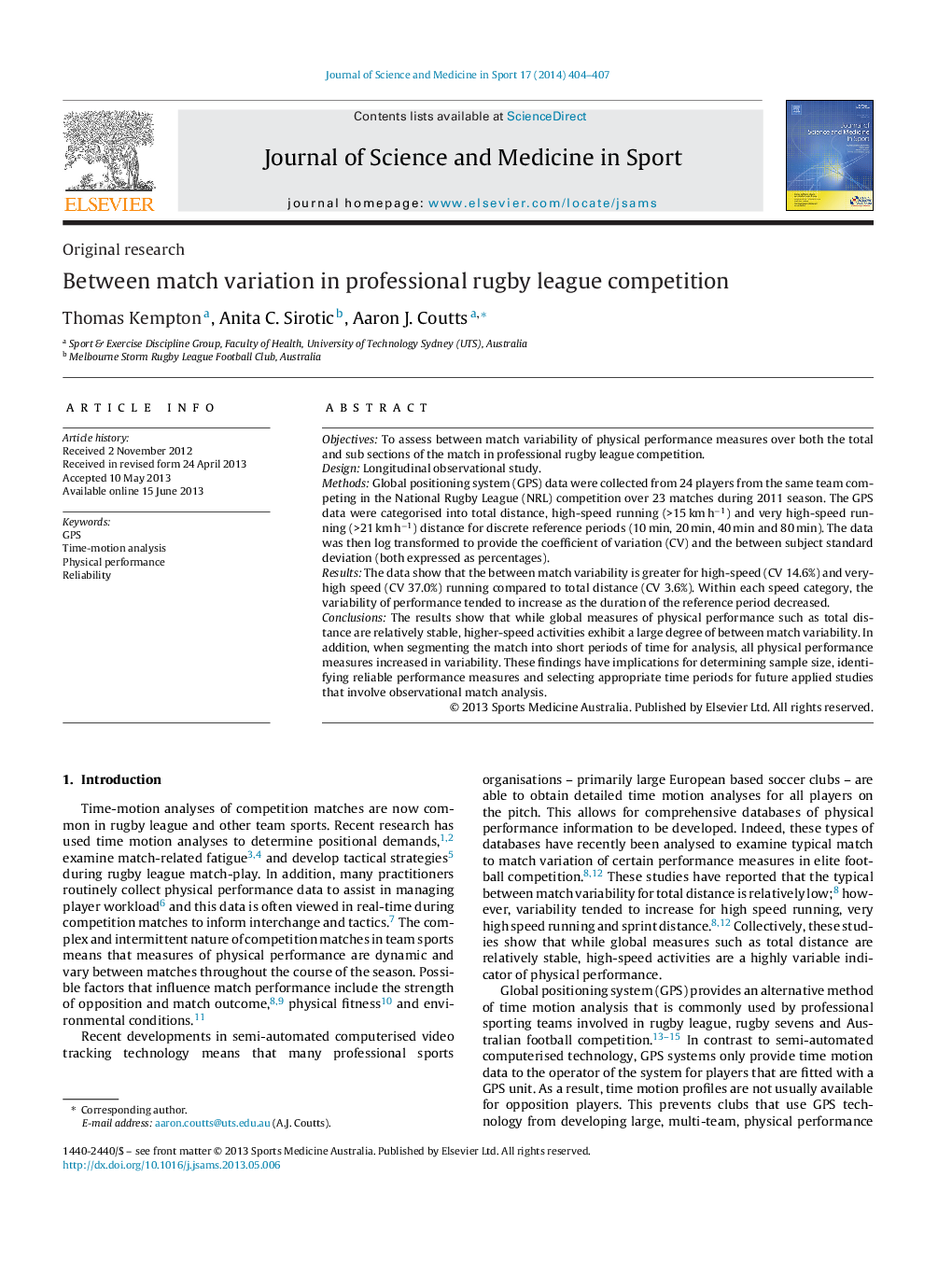| Article ID | Journal | Published Year | Pages | File Type |
|---|---|---|---|---|
| 2702836 | Journal of Science and Medicine in Sport | 2014 | 4 Pages |
ObjectivesTo assess between match variability of physical performance measures over both the total and sub sections of the match in professional rugby league competition.DesignLongitudinal observational study.MethodsGlobal positioning system (GPS) data were collected from 24 players from the same team competing in the National Rugby League (NRL) competition over 23 matches during 2011 season. The GPS data were categorised into total distance, high-speed running (>15 km h−1) and very high-speed running (>21 km h−1) distance for discrete reference periods (10 min, 20 min, 40 min and 80 min). The data was then log transformed to provide the coefficient of variation (CV) and the between subject standard deviation (both expressed as percentages).ResultsThe data show that the between match variability is greater for high-speed (CV 14.6%) and very-high speed (CV 37.0%) running compared to total distance (CV 3.6%). Within each speed category, the variability of performance tended to increase as the duration of the reference period decreased.ConclusionsThe results show that while global measures of physical performance such as total distance are relatively stable, higher-speed activities exhibit a large degree of between match variability. In addition, when segmenting the match into short periods of time for analysis, all physical performance measures increased in variability. These findings have implications for determining sample size, identifying reliable performance measures and selecting appropriate time periods for future applied studies that involve observational match analysis.
